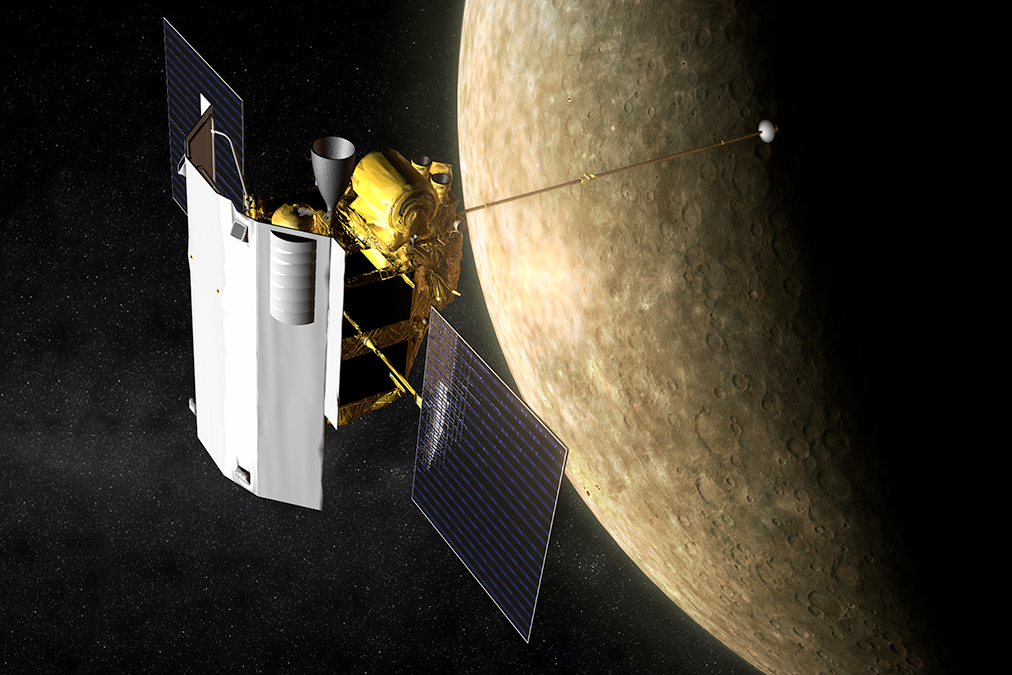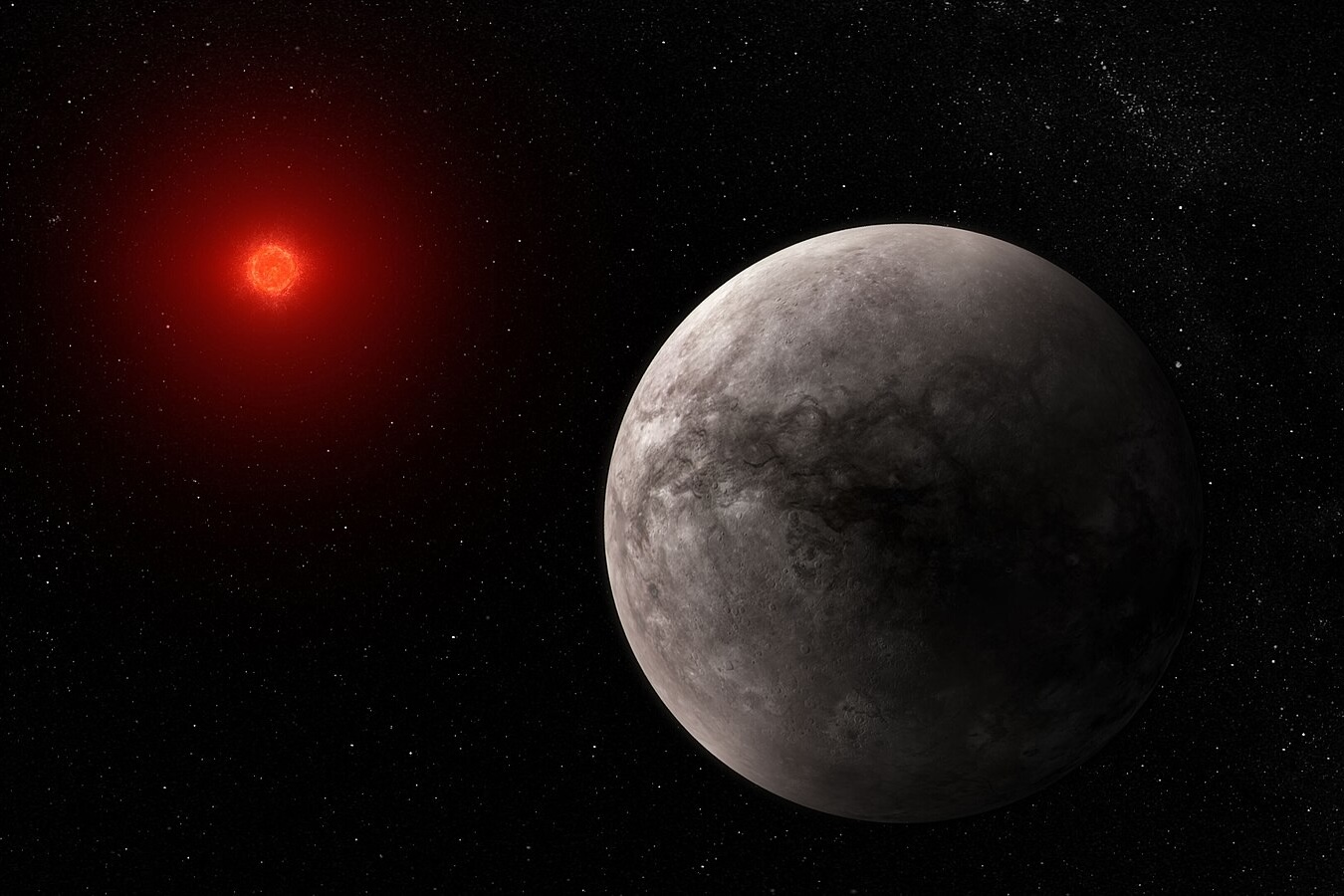In the journals JGR: Planets and JGR: Machine Learning and Computation, BAERI Research Scientist Ariel…
BAER Institute alumna Dr. Lucia Kleint leads team in capturing stunning new images of the sun, with an assist from Covid-19 lockdown
The impacts of Covid-19 and the global lockdowns are challenging all parts of work and home life. And for research scientists it’s no different.
But when a team of researchers led by BAER Institute alumna Dr. Lucia Kleint began lockdown stranded at the Teide Observatory in the Canary Islands for three weeks, it didn’t slow down their work. It led to a breakthrough.

Dr. Lucia Kleint; Image: Denise Ferrarese
Dr. Kleint leads a team that works with GREGOR, a solar telescope that captures ultra-high resolution images of the sun. The telescope is so powerful it can see details on the sun’s surface that are as small as 50 km (about 30 miles) wide. Our sun is massive, so it’s like standing more than half a mile away from a soccer field and clearly spotting a needle sitting in the grass.
Getting to that level of resolution doesn’t come easily.
Similar things that blur human vision affect telescopes too, like astigmatism. GREGOR’s blurring was corrected by replacing two elements with highly specialized mirrors. These mirrors, called off-axis parabolic mirrors, were polished to an incredibly high precision of 6 nanometers — that’s only 1/10,000 the diameter of a human hair.
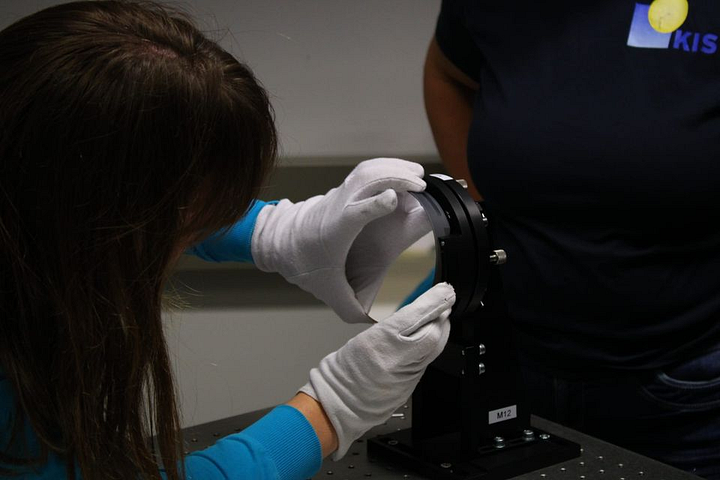
Mounting the new mirror; Image: Lucia Kleint
“When I first walked into the mechanical workshop,” Kleint said, “I told them: ‘Oh, by the way, we’re going to remove everything and put everything in a new configuration.’ And: ‘Yes, please, in half a year.’ They were looking at me like, are you crazy? Usually that takes several years.” They did it in one.

GREGOR optics upgrade; Image: Lucia Kleint
Kleint attributes most of their success to hard work. But part of it, she said, was also luck. “We actually were lucky because we got the mirrors, which is the main part of that new set up, . . . one week before the factory was locked down in France.”
They got the mirrors via curbside pickup — no one on her team was allowed inside the factory because of Covid. And with flights already beginning to be cancelled, she had few options for shipping cargo. In the end, some of the telescope pieces were brought to the observatory in hand luggage. (Yes, Dr. Kleint has spent lots of time in airports explaining her luggage to TSA.)
When her team arrived at the observatory in early March they knew, “Italy [was] doing pretty bad, but Spain was still fine at that point,” she said. “But based on that exponential curve we were sort of expecting [it]: In seven days, we’re going to be Italy.”
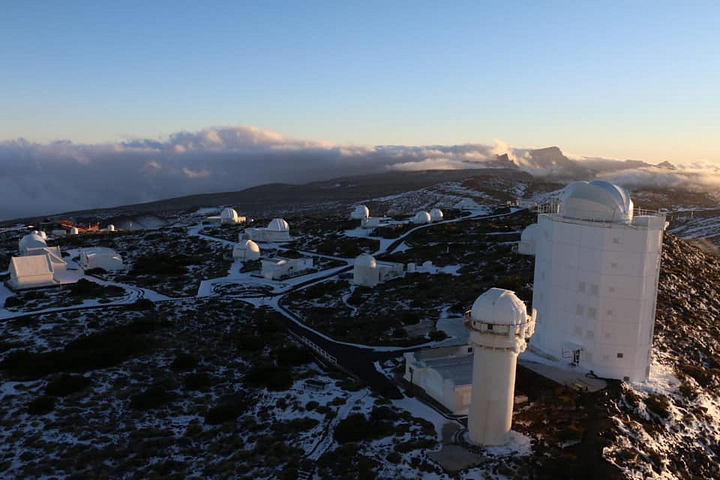
Teide Observatory, March 2020; Image: KIS
They weren’t wrong. Soon, all their flights were canceled. With no way to get home to Switzerland and Germany, Kleint and three other scientists on her team were stranded on the side of a volcano: 8,000 feet and 45 minutes away from the nearest neighbor. Isolated and with plenty of space to spread out, they knew they were safe.
Three additional team members had been unable to travel to the observatory as planned, so everyone had to quickly learn new things. “For example,” Kleint said, “our electronics person couldn’t come, so somebody else had to figure [that] out.”
Stranded for longer than expected, they had to improvise dinner too. “We started figuring out where all the freezers are,” said Kleint, “and we found stuff in the freezers which had been there for months. And after like two weeks, . . . we had eaten everything that we found. And at that point, we asked the local staff if they could please go shopping for us, and they did.”
“It was quite fascinating to see how nice and close people became, and we cooked dinner always together, . . . taking turns, or, mostly one person who is really good at cooking cooked, . . . [We would] have dinners together and . . . play ping pong. You would think that you would be annoyed by the people after two weeks. But no, not at all.”
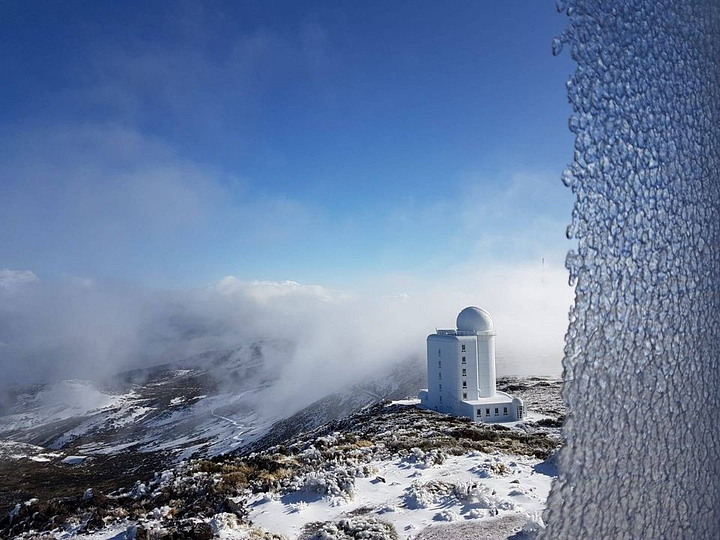
March 2020 snowstorms at Teide Observatory; Image: KIS
There were snowstorms during those three weeks that prevented the team from doing much observing, but “we knew [our upgrades had worked] because the test images looked really good. . . . But the actual proof that it worked came in July.”
“We’re now really seeing tiny, tiny structures,” says Kleint, “so we can really say ‘Oh, [the] temperature is like this here, like that there.’ I hope we will get a clearer model of the sun, and how everything works.”
A technical description of the telescope’s redesign was recently published by the Astronomy & Astrophysics journal in a recent article led by Dr. L. Kleint: GREGOR: Optics redesign and updates from 2018–2020
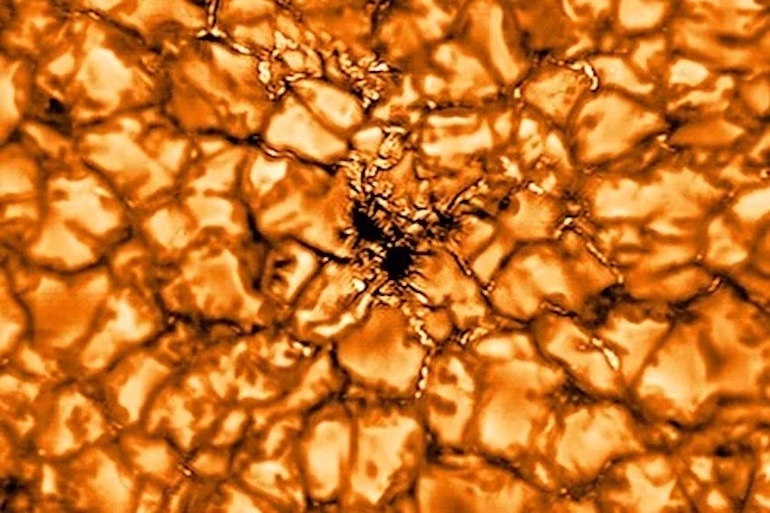
A sunspot observed in high resolution by the GREGOR telescope at the wavelength 430 nm; Image: KIS

